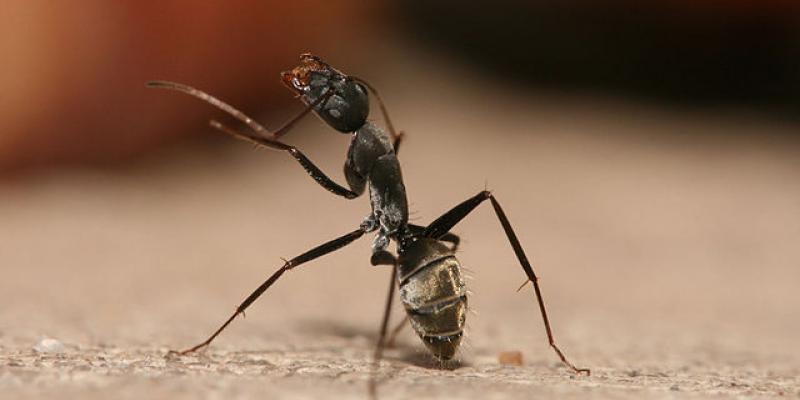
Wikipedia can tell you a lot about Carpenter Ants; how large they are, indigenous to many climates, prefer damp areas, and how they disastrously damage wooden structures with their tunneling, but there’s a lot that Wikipedia leaves out. Below are eight little known facts about carpenter ants.
1. Colonies are often established in wet areas like windowsills and door casings, but moist wood isn’t the only thing they destroy. Carpenter Ants prefer rotting wood to create their maze of tunnels, but their large mandibles can chew through dense lumber just as easily.
2. Colonies can even live within creosote-treated railroad ties because they don’t actually eat the wood, but only chisel tunnels and homes in it with their mouthparts.
3. If a Carpenter ant bites you with its powerful jaws, it spray formic acid into the wound. This acidic blast can cause a terrible burning sensation in the injured site.
4. If you see Carpenter Ants outside, beware. That tree stump outside might seem like a good place for the ants, but if they’re disturbed, they’ll move. A disrupted colony will travel to a more inviting location, like a nearby home or office building. The colony might also decide to extend its foraging range…into your kitchen. Since they don’t eat wood, they are always looking for food. The foraging range of Carpenter Ants can take in several hundred feet.
5. You can hear a heavy infestation. As ants move within walls, brushing against the tunnel interiors, a soft rustling sound can be heard from within the house. That is the sound of structural damage.
6. If you find winged adults massing inside your home during the late spring or summer, it’s the sign of a serious infestation. If conditions are right, colonies will swarm after years of chewing away inside your walls.
7. Wikipedia is quiet on how to control an infestation once it has been established. Anyone experiencing piles of sawdust and ant carcasses in their home or office is going to want to know what to do about it. Eliminating areas of high moisture will go a long way toward controlling the infestation. There are also a wide variety of chemicals that will kill the worker ants, but if the queen remains alive all those dead ants will soon be replaced. A certified pest control expert will know the best combination of chemicals to use in order to get the queen.
8. There are a few great recommendations that can be followed in order to prevent infestations and re-infestations. Remove stumps and dead wood from around your home. Correct moisture problems by clearing gutters, fixing plumbing issues and repairing holes in siding. Trim shrubbery and keep vegetation away from the house. That goes for firewood as well, keep it away from your home.
Carpenter ants can cause a great deal of damage but if you’re prepared and have an incredible exterminator, you don’t need to fear the destruction they can bring.